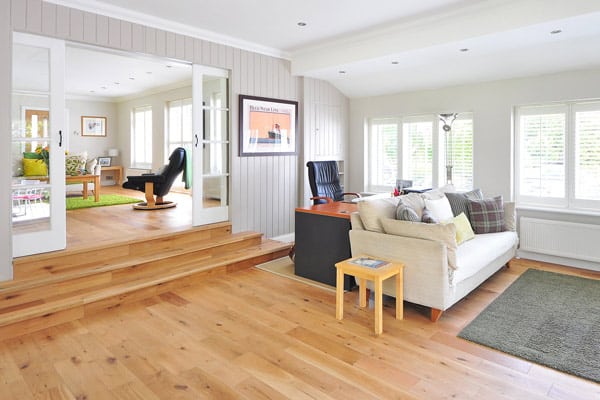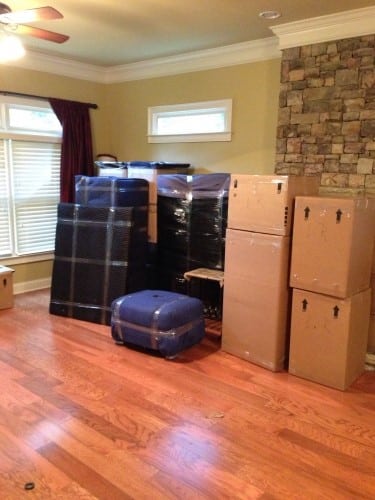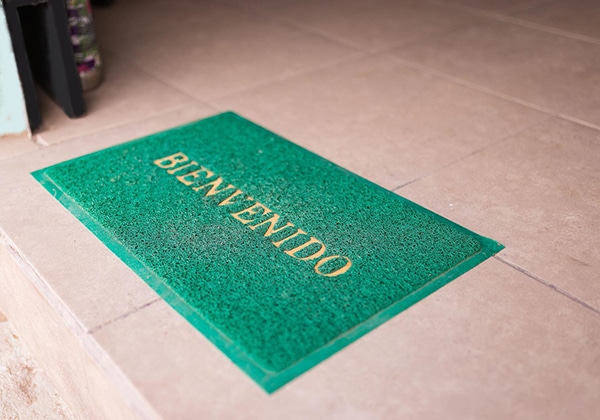Whether you’re moving out of your old house or apartment and looking to sell it or moving out of a rental unit and looking to get your security deposit back, it’s important to leave the property in good condition – and when moving into a new home, it’s just as important to keep the place undamaged and pristine.
Yet, moving house without causing any damage to the property is very difficult. When hauling large and heavy items around, scratches, dents, and chips – and even breakages – are bound to happen – and they most often happen to the floors. From accidentally dropped items to carelessly dragged furniture, almost all moving missteps and mishaps result in damage to the floors – which means that the floors need the most protection on Moving day.
But how to protect floors when moving? Fortunately, it’s easy enough – all you need to do is follow the expert floor protection tips below.
Pack your items as safely as possible
As surprising as it may sound, proper packing is one of the best precautions you can take to prevent damage to the floors when moving.
The reason is easy to understand – when your items are packed correctly, the risk of accidents on moving day is much smaller. Besides, even if an item is dropped while being taken in or out of the home or a heavy piece is hastily dragged across the room, they are less likely to damage the floors when they’re safely wrapped in soft protective materials.
So, in order to reduce the risk of damage to the floors during your move, you need to pack your items as safely as possible:
- Wrap furniture and appliances in thick moving blankets, so their edges cannot scratch or dent the floors if the heavy items are slid across the surface or dropped on the floor;
- Use sturdy moving boxes that won’t break under the weight of their contents. Double tape the bottoms of the cartons for extra safety and do not make the boxes heavier than 40-45 pounds. This way, there will be no risk of the cartons collapsing under their own weight and the boxes will be easy to carry – and, therefore, less likely to get dropped.
Use specialized moving equipment
Using appropriate moving equipment will make things easier and safer on moving day – and will help prevent damage to the floors:
Moving dollies
Moving dollies allow you to roll your items in and out of the home without any risk to the floors.
The item you’re moving sits stably on the dolly platform (several inches above the floor, so there is no way it can scratch the surface) and is securely strapped to the dolly (so it can’t topple over and fall on the floor).
Whether you’re using a utility dolly (to move stacks of boxes or smaller furniture pieces), an appliance dolly (to move kitchen appliances), or a furniture dolly (to move large and heavy furniture), using a dolly will keep your floors from getting damaged during the moving process. (Just make sure the dolly has rubber wheels, not metal ones – rubber wheels are soft, so they can’t scratch the floor.)
Moving straps
Furniture lifting straps allow you to lift and carry heavy objects securely and with ease, thus greatly reducing the risk of injuries and damages during the move.
When moving an item with the help of moving straps, it doesn’t come in contact with the floor at all, so it can’t damage it in any way – the item is lifted several inches above the ground and is kept secure by the straps, so it can’t fall on the floor.
Furniture sliders
Wondering how to protect hardwood floors when moving furniture or appliances? Use furniture sliders – they will let you slide huge and heavy items across the room without inflicting any damage to your wood floors (or any other type of floor, for that matter).
The flat plastic pieces have rubber surfaces (so they can’t scratch the floors) and can be easily fitted under the legs or corners of furniture and appliances, allowing you to slide the heavy items across the floor with minimum effort and no risk of damage.
Cover the floors with protective materials
Naturally, the best way to protect floors when moving is to cover them with protective coverings:
- Plywood sheets – Plywood sheets provide ultimate protection to the floor as they create a kind of second floor over the actual one. If you cover your floors with plywood sheets, no damage can come to them during the move – the plywood sheets may get scratched, scraped, dented, or stained, but the floor underneath will remain intact and unscathed;
- Floor runners – Floor runners are your best bet for preventing damage to wood floors during a move. The self-adhesive protective coverings are made of neoprene or carpeting that provides excellent protection and minimizes the risk of scratching and denting the wood while hauling heavy pieces across the floor;
- Old blankets or rugs – Blankets and rugs make excellent protective coverings – they’re soft and thick, so they will not only keep your floors from getting scratched on moving day, but will also keep them safe in case a heavy object is dropped on them. Just be sure to secure the blankets and rugs to the floor with painter’s tape, so they don’t slide around when walked on or get bunched up and create a tripping hazard;
- Large pieces of thick cardboard – You may not have enough old blankets or rugs to cover the floors on moving day and may not want to waste your money on floor runners or plywood sheets (they’re rather expensive), but you will certainly have some left-over cardboard boxes after finishing packing (spare boxes you got “just in case”, old boxes that you got for free but that aren’t good enough to be used for packing, etc.). You can put these unneeded boxes to good use to protect your floors on moving day – just break them down and use the large cardboard pieces to cover the floors. The thick cardboard will prevent damage to the flooring and will keep dirt and dust away;
- Carpet masking – If your floors are covered with carpets, they won’t need padded protection – they will need protection from tearing, moisture, and dirt. So, in this case, cardboard blankets, and floor runners are not very appropriate floor protection options. How to protect carpet when moving, then? Carpet masking – carpet film protector made of polyethylene – provides the best way to protect carpet during a move. The plastic film is waterproof, durable, and resistant to tear – it keeps mud and dirt away from the carpet and minimizes the risk of rips and tears during the move.
Bonus tip for protecting floors when moving: Prevent dust, dirt, and mud from tracking in
As already mentioned above floors are at great risk of damage during a house move – wood floors can easily get scratched or dented by a falling item or an improperly dragged furniture piece, tile floors can break if a heavy object is dropped on them, carpets can tear when a heavy item is hauled across the room, etc. So, if you don’t want to strain your moving budget with floor repair costs, you need to take every measure to protect the floors.
However, floor protection during a move is not limited to protection from damage only – you need to protect the floors from dirt and mud as well (unless you don’t mind spending hours cleaning the floors after the exhausting moving day, of course).
While tile floors, laminate floors, and vinyl floors are relatively easy to clean, dirt and mud can be very difficult to remove from – and can be harmful to – wood floors and carpeted floors (carpets and delicate wood surfaces can easily stain, mud can cause water damage to these types of flooring, etc.).
So, how to prevent dust, dirt, and mud from getting onto your floors on moving day?
All types of protective coverings will keep dust and dirt away from the floors, but only plywood sheets and film protectors will provide protection from mud and water.
It will be best, however, to prevent dirt and mud from tracking into the home in the first place:
- Place a doormat in front of the main door and a second one just inside the entrance – so anyone who’s about to enter your home can wipe off their shoes;
- Provide disposable shoe covers (shoe booties) and ask people to wear them when entering your home
Knowing how to protect floors when moving will help you prevent property damage and avoid extra costs and extra troubles. Yet, if you want to ensure a smooth and damage-free relocation, your best bet is to hire the services of a professional moving company – the experts know their job and have the technical know-how, rich experience, and specialized moving equipment to perform your move without inflicting any damage to your floors or the rest of your property. Your relocation will be safe and successful and you will be more than happy with your choice to hire professional movers.










